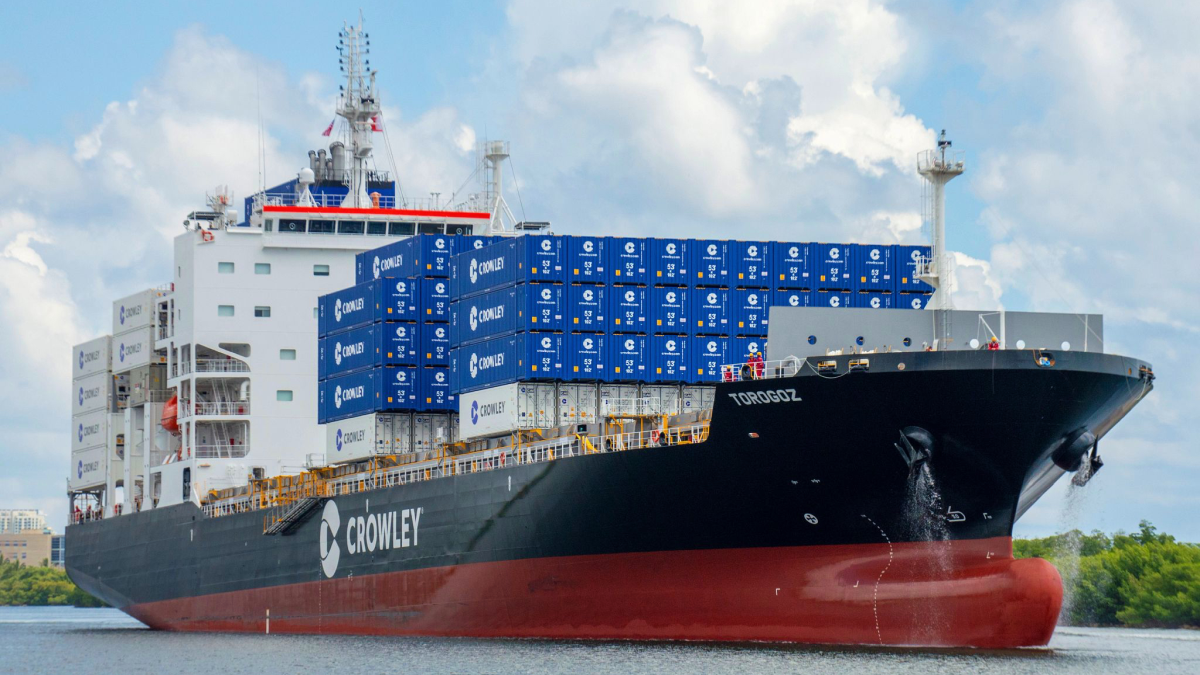Business Sectors
Events
Contents
Register to read more articles.
Coming to grips with the commercial implications of FuelEU Maritime
A new online FuelEU Maritime calculator launched by the Baltic Exchange provides a clearer picture of the commercial implications of the regulation for shipowners, and reveals the high costs of using ammonia and methanol
Shipowners that sail to EU ports understand FuelEU Maritime adds yet another layer of complexity to their ever-increasing regulatory load. But what they might not fully realise are the new law’s financial and commercial implications.
Baltic Exchange emissions lead and Lookout Maritime chief executive, Martin Crawford-Brunt sees FuelEU Maritime as “a much bigger challenge contractually” than IMO 2020, when ships had to switch from burning fuel oil with 3.50% sulphur to 0.50% as of 1 January 2020.
He pointed to “all sorts of new mechanisms in terms of pooling, banking and borrowing” with FuelEU Maritime, which comes into force on 1 January 2025. “It complicates the commercial relationship with the charterer. FuelEU Maritime clearly points to the ISM doc holder as the compliance partner, whereas EU ETS points to the polluter, which may be defined differently. So, yes, this is just layering on the complexity,” he observed.
FuelEU Maritime, combined with maritime transport’s inclusion in the EU Emissions Trading System (EU ETS) on 1 January 2024, are designed by European policymakers to jumpstart the uptake of low- and zero-carbon fuels in shipping, while lowering the marine sector’s CO2 and greenhouse gas emissions. European lawmakers are putting a price on carbon, while trying to close the price gap between traditional marine fossil fuels and alternative fuels.
Supporting commercial decisions
Given this complex regulatory landscape, the Baltic Exchange has launched an online calculator tool that provides an estimate of the cost of complying with FuelEU Maritime for ships using alternative fuels between 2025 and 2030, with reference to the Baltic standard ship on the standard routes. The idea is to empower shipowners with a data-based decision tool to make better commercial decisions.
The Baltic Exchange FuelEU Maritime Calculator is straightforward. By inputting a ship’s deadweight, type, speed and consumption, a shipowner can generate a comparison between a vessel burning alternative fuels and the Baltic standard ship burning very low sulphur fuel oil (VLSFO) navigating outside Emission Control Areas and marine gasoil (MGO) everywhere else.
The calculator results are displayed only for those Baltic standard routes that either connect, start or end at EU ports.
“We’ve really worked hard to make this as simple as possible to use, while providing the industry with the maximum opportunity to understand the implication of these regulations,” said Mr Crawford-Brunt.
He explained the calculator can be a valuable tool for both shipowners and freight buyers. Shipowners can use the calculator to understand if they are pricing their services correctly while freight buyers can check whether they are paying a fair price.
Only fossil-based variants of alternative fuels are currently included in the calculator, as these will be available first and are expected to be more competitively priced than green alternatives. The tool is set to include biofuel blends, for diesel and LNG, which have a known well-to-wake factor, in future updates. Th Baltic Exchange is also looking for feedback on how it can improve the calculator.
High costs of new fuels
One of the things the calculator does reveal in dollar terms is the exorbitant costs of operating a ship on methanol and ammonia.
“Everyone is quite shocked at the methanol and ammonia numbers, and LNG numbers. It’s counterintuitive,” said Mr Crawford-Brunt.
Depending on the type of ship and engine technology, a shipowner could generate a significant benefit operating on LNG. One of those is an old steam turbine-powered ship, which Mr Crawford-Brunt said which allows the combustion of all LNG. “There’s no slip because it burns in a boiler to produce steam. The next best is a two-stroke, slow-speed, ME-GI because you have limited methane slip,” he said.
Four-stroke, Otto-cycle LNG dual-fuel technology doesn’t fare well under the regulation. “With four-stroke, dual-fuel diesel-electric propulsion, you get no benefit from burning LNG because of the slip that’s factored in. So, it becomes not only the fuel you burn, but how you burn it,” he said.
And, as shown in the accompanying tables, the penalty and fuel price for methanol and ammonia is prohibitive.
“So, if you’re planning tactically or strategically to build a dual-fuel methanol ship that’s going to trade to Europe, looking at this calculator might make you reconsider,” he said.
The calculator covers pricing at the 2% penalty that will be in force from 2025-2030. But the regulatory landscape will evolve, with penalties tripling to 6% after 2030.
But the calculator makes it clear that if you are operating on “grey methanol or grey ammonia, you’re going to get penalised,” said Mr Crawford-Brunt. Consequently, he said FuelEU may slow “the uptake of methanol or ammonia in Europe because you wouldn’t want to operate on those fuel types if you had a choice commercially. It’s not advantageous,” he concluded.
“It all gets very real when you put dollar numbers on the penalties and fuel alternatives,” he said.
By the numbers
For example, a 50,000-dwt MR tanker operating on the TC14 Baltic route (Houston – Amsterdam), assuming a VLSFO price of US$600/tonne and MGO of US$700/tonne, will face approximately US$483,000 in fuel costs and a FuelEU Maritime penalty of US$29,400 in 2025.
However, the calculator provides the option to quickly see the related costs if the vessel ran on LNG, methanol or ammonia. The example in Table 1 is based on the default fuel price inputs, as follows - LNG US$750/tonne, methanol US$1,500/tonne and ammonia US$1,200/tonne. The fuel prices can easily be changed by the user.
The benefit is that any decision maker can gain a quick overview of the cost implication associated with selecting various fuels for that voyage. The tables below demonstrate the importance of including the cost of FuelEU compliance as part of the decision-making process for EU voyages.
|
Table 1 - 50,000-dwt MR tanker operating on TC14 Houston – Amsterdam |
||
|
|
FuelEU Maritime Penalty 2025 |
Fuel Cost |
|
VLSFO |
US$29,400 |
US$483,000 |
|
LNG |
US$-151,000 |
US$487,000 |
|
Methanol |
US$253,000 |
US$2,225,000 |
|
Ammonia |
US$262,000 |
US$1,910,000 |
Table 1- Shows approximate FuelEU Maritime penalty and fuel costs for a 50,000-dwt MR tanker operating on TC14 Houston – Amsterdam. Assumed ballast and laden speed of 11 knots. All costs are approximate. (source: Baltic Exchange FuelEU Maritime Calculator)
In another example shown in Table 2, a 180,000-dwt Capesize vessel operating on the C2 Baltic route (Tubarao – Rotterdam round voyage) would face a FuelEU Maritime penalty of US$66,600 and a total fuel cost of US$942,000. However, once again, the Baltic Exchange Emissions Calculator can showcase the different costs for other fuel types, enabling users to have more decision-making capabilities to understand their voyage-related costs.
“As a shipowner, you want to be sure you cover your voyage costs. This includes understanding the cost of complying with the new FuelEU Maritime regulation and who will pay for what to avoid being left holding the penalty,” Mr Crawford-Brunt concluded.
|
Table 2- 180,000 dwt Capesize operating on C2 Tubarao – Rotterdam round voyage |
||
|
|
FuelEU Maritime Penalty 2025 |
Fuel Cost |
|
VLSFO |
US$66,600 |
US$942,000 |
|
LNG |
US$-327,000 |
US$973,000 |
|
Methanol |
US$253,000 |
US$4,698,000 |
|
Ammonia |
US$557,000 |
US$4,010,000 |
Table 2- Shows approximate FuelEU penalty and fuel costs for a 180,000-dwt Capesize vessel operating on C2 Tubarao – Rotterdam round voyage. Assumed ballast and laden speed of 11 knots. All costs are approximate. (source: Baltic Exchange FuelEU Maritime Calculator)
Sign up for Riviera’s series of technical and operational webinars and conferences:
- Register to attend by visiting our events page.
- Watch recordings from all of our webinars in the webinar library.
Related to this Story
Events
Offshore Support Journal Conference, Americas 2025
LNG Shipping & Terminals Conference 2025
Vessel Optimisation Webinar Week
© 2024 Riviera Maritime Media Ltd.












